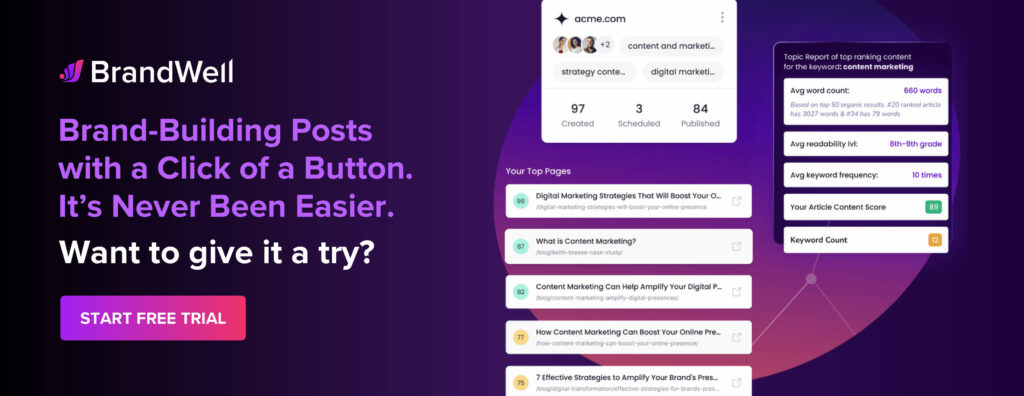Discover top guides, trends, tips and expertise from AIO Writers
Benchmark Your Website Against Competitors (Step-by-Step Guide 2025)
Jeff Joyce
Monday, 20th Jan 2025
In today’s competitive digital landscape, simply having a website isn’t enough. To thrive online, you need to know where you stand compared to your competitors. This is where competitive benchmarking comes in.
By carefully analyzing your competitors, you can find opportunities to improve your website’s performance. This will help you attract more customers and ultimately achieve your business objectives. It’s about learning from the best (and worst) in your industry, then using that knowledge to get ahead.
Competitive benchmarking isn’t just about comparing website traffic or copying keywords. It’s about understanding their strategies and finding valuable insights. These insights will help you fine-tune your own online presence.
Table Of Contents:
- Why is It Important to Benchmark Your Website Against Competitors?
- How to Benchmark Your Website Against Competitors (Step-by-Step Guide)
- How Often Should You Benchmark Your Website Against Competitors?
- FAQs: Benchmark Your Website Against Competitors
- Conclusion
Why is It Important to Benchmark Your Website Against Competitors?
Imagine crafting a killer marketing strategy but having no idea how it stacks up against your competition. You could be missing opportunities or repeating the same mistakes as others in your niche.
This is where competitive benchmarking comes into play. It gives you the insights you need to succeed — straight from your industry peers.
Why should you benchmark your website against your top competitors?
1. To Gain a Competitive Edge in Your Industry
With half of all consumers starting their buying journey on a search engine, you need every advantage. Understanding what keywords bring traffic to your competitors can be your secret weapon. Use those insights to improve your search engine optimization and achieve higher rankings.
2. To Refine and Optimize Your Strategies
Google Analytics only tells you about your website. You can get even better data by analyzing things like bounce rate and time-on-page.
Compare this data with competitors to refine your approach and gain a more complete analysis. Look for areas where your competitors are falling short so you can avoid repeating their mistakes.
3. To Make Data-Driven Decisions
Don’t rely on assumptions. Let’s say your biggest competitor’s website loads in under two seconds, while yours takes more than five. Data shows that 53% of people will abandon a website if it takes more than three seconds to load.
You immediately know that improving your site speed could lead to more conversions. Use this data to improve specific areas of your website and make better decisions about your marketing budget.
4. To Spot Emerging Trends in Your Market
Remember when everyone thought TikTok was just for kids? Those businesses that conducted competitive benchmarking in industries with a younger target demographic saw it coming.
They were ready to capitalize on a new trend before it was even a trend. That’s the power of competitor analysis.
How to Benchmark Your Website Against Competitors (Step-by-Step Guide)
Here’s a simple guide on how to benchmark your website against competitors and gain actionable insights:
Step 1: Choose Your Competitors (Wisely.)
Before you can start analyzing your competitors, you need to know who your competitors are. This might seem simple, but there’s a little more to it than you might initially think.
Think about your direct competitors. These businesses likely share several things in common with your own company:
- Target audience
- Business size
- Region
- Product or service offerings
You can also benefit from benchmarking your business against indirect competitors. These companies might offer slightly different products or services than yours, but they still compete for the same customer base.
For example, if you sell e-commerce software, your direct competitors would be companies like Shopify or Squarespace. However, your indirect competitors might include companies that offer website design services or payment processing solutions.
It might be tempting to target the biggest names in your industry. Focus your analysis on competitors with similar target audiences and business goals. This approach will be much more beneficial in the long run.
Remember, it’s about gaining valuable insights relevant to your unique market positioning. Think local businesses if you operate locally, startups if you’re a startup, or e-commerce giants if you’re going global.
When choosing competitors to benchmark against, consider what you want to learn from the process. For example, if you’re trying to improve your website’s search engine ranking, you’ll want to choose competitors who are already ranking well for your target keywords.
Step 2: Pinpoint the Right Metrics for Website Benchmarking
Choosing the right competitive benchmarks is crucial for understanding your company’s position in the market.
Start by identifying the most important channels for your business. Is it social media engagement, organic search ranking, or perhaps paid advertising ROI?
Once you know which areas are most critical for your success, you can start selecting the specific metrics that will serve as your benchmarks.
The metrics you choose will vary based on your goals. To benchmark your website against competitors, don’t just look at the numbers – dive deeper.
Here are some key areas and specific metrics you’ll want to consider:
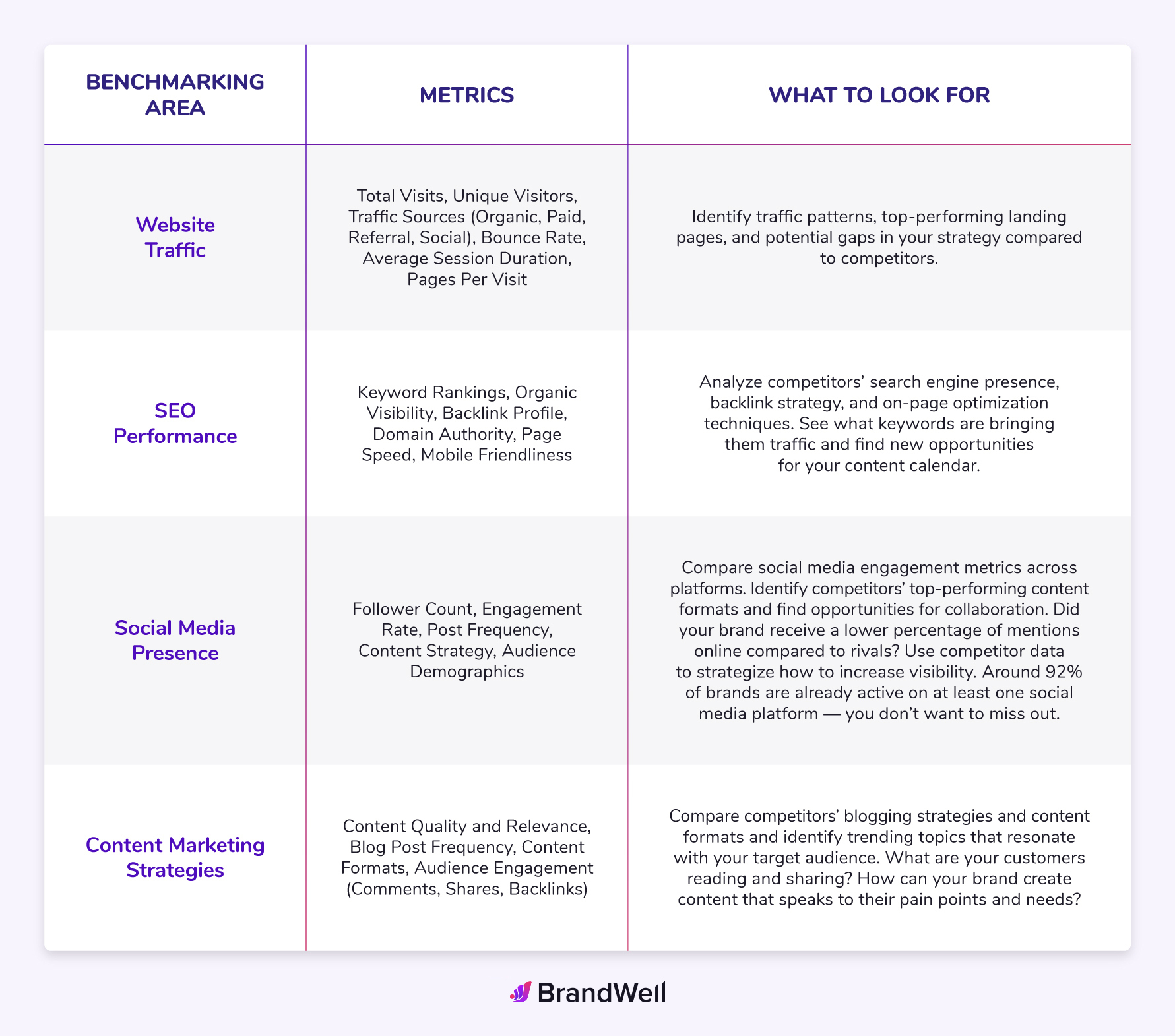
By analyzing your competitors’ performance in these key areas, you can gain valuable insights into what’s working well in your industry and identify areas where your own strategies could be improved.
Step 3: Gather Data
Unless you want to manually sift through endless spreadsheets, utilizing website benchmark tools is key. They’re the secret weapons in your marketing arsenal.
These tools automate much of the heavy lifting so you can focus on what matters most. Transform that data into actionable strategies to improve your marketing and get more customers.
Here are some top tools for gathering website benchmarking data:
- Ahrefs: In-depth keyword research, competitive analysis, and backlink monitoring.
- Semrush: Offers a comprehensive suite of SEO and marketing tools. Features include traffic analysis, keyword research, and competitor benchmarking features.
- Similarweb: Great for understanding website traffic sources, audience demographics, and engagement metrics. It also offers industry benchmarking capabilities, so you can compare your website’s performance to industry averages.
- Serpstat: Affordable alternative with a strong focus on search analytics, rank tracking, and backlink analysis. Their reports give clear visualizations of competitive landscapes, with functionalities such as “Missing Keywords” to boost your organic search presence.
Check out our complete guide on how to master competitor analysis.
Step 4: Analyze Your Findings
You’ve identified your top competitors and the key performance indicators (KPIs) you want to track. Now it’s time to analyze!
But how do you actually measure and compare their performance against your own?
You can gain valuable insights into your competitors’ strategies and effectiveness by leveraging publicly available data.
Unearth Insights from Customer Reviews
Online reviews are a goldmine of information. Platforms like Trustpilot, Yelp, and industry-specific review sites provide a platform for customers to share their experiences.
Pay attention to the sentiment expressed, both positive and negative.
What are customers praising? What are they complaining about?
By analyzing this feedback, you can identify areas where your competitors excel or struggle, providing valuable input for your own business strategies.
Dive Into Social Media
Social media platforms are essential for businesses today, offering a public window into their marketing efforts. By analyzing a competitor’s social media presence, you can glean insights into their content strategy, target audience engagement, and overall brand perception.
Tools like SproutSocial or Buffer can help you track metrics like follower growth, engagement rates, and audience demographics, enabling you to benchmark your own social media performance against the competition.
Step 5: Transform Your Website Benchmark Data into Actionable Insights
You’ve gathered intel and crunched the numbers. Now, for the exciting part: transforming all this valuable data into a strategic action plan to grow your customer base.
But first, ask yourself a few key questions. You’ll want to dig into any significant differences, analyze successful tactics, and note what to avoid.
- What are their customers saying on social media? Could my social media presence be more engaging?
- How often are they publishing content? Could my brand improve its content marketing strategy?
- What type of content seems to resonate with their audiences? Would creating similar content with higher quality give my website a boost?
Then, build a roadmap to achieve these actionable goals.
Here are some examples:
- Enhance Your Content Strategy: Create compelling content around those high-ranking keywords. Think blog posts, infographics, videos — whatever your target audience craves.
- Focus on Getting Backlinks: Look for high-authority websites in your industry and develop a strategy for link-building outreach. These links are like gold stars for Google, telling the search giant that you’re legit.
- Supercharge Your Website Speed and User Experience: Improve user experience on your website with intuitive design and quick loading times.
- Create an Effective Email Marketing Strategy: Are your email subject lines engaging and concise? Are your competitors killing it with newsletter sign-ups?
Here’s where a powerful brand growth platform like BrandWell comes in.
More than just a long-form content writer, BrandWell offers a complete content intelligence suite that lets you run topic reports, create content briefs, and run optimization audits to make your AI-generated content better.

Let me break down how each of these tools works.
First, topic reports provide you with a detailed analysis of your top 40 competitors’ content — see what they’re doing right and find any content gaps you can fill.
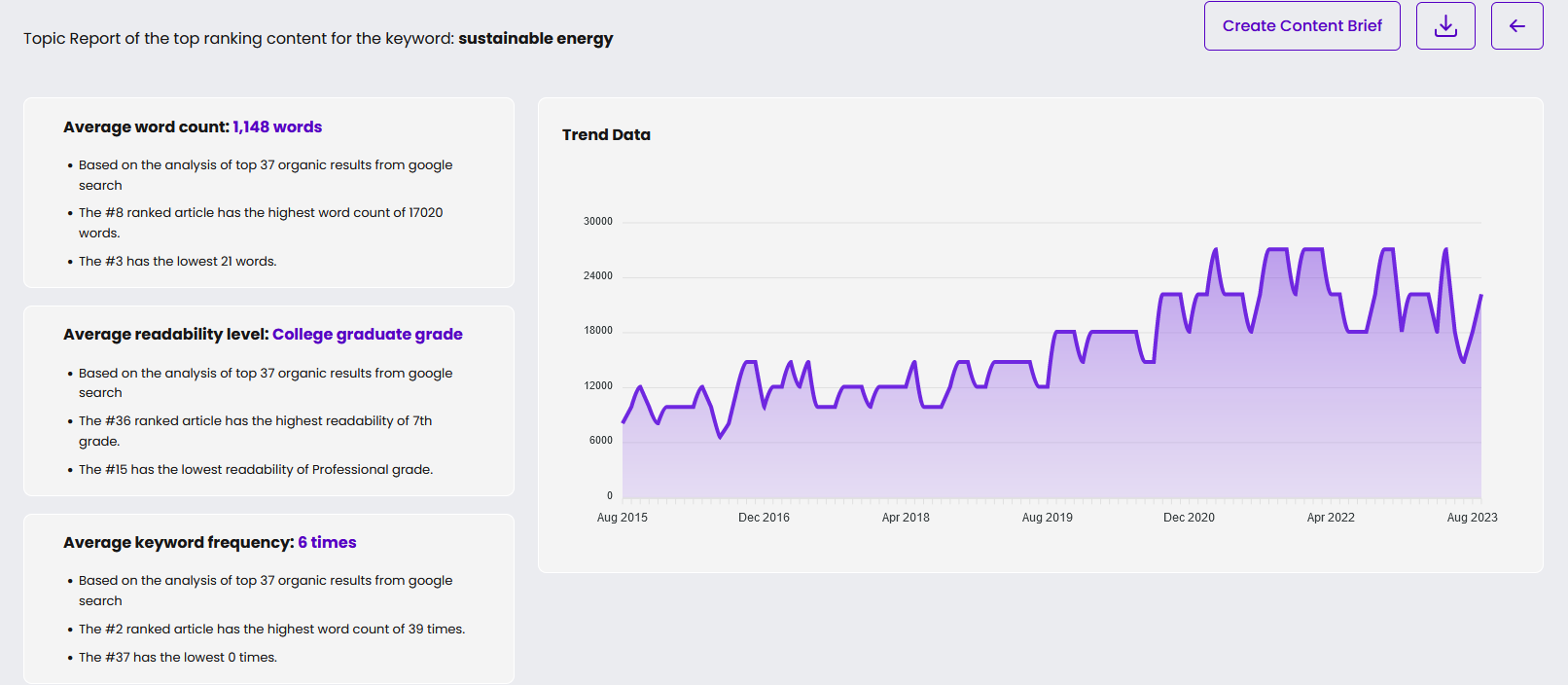
From the topic report, you can begin building a custom content brief for your new blog post, pulling real-time top-ranking information and structuring headers and subtopics in a logical outline.
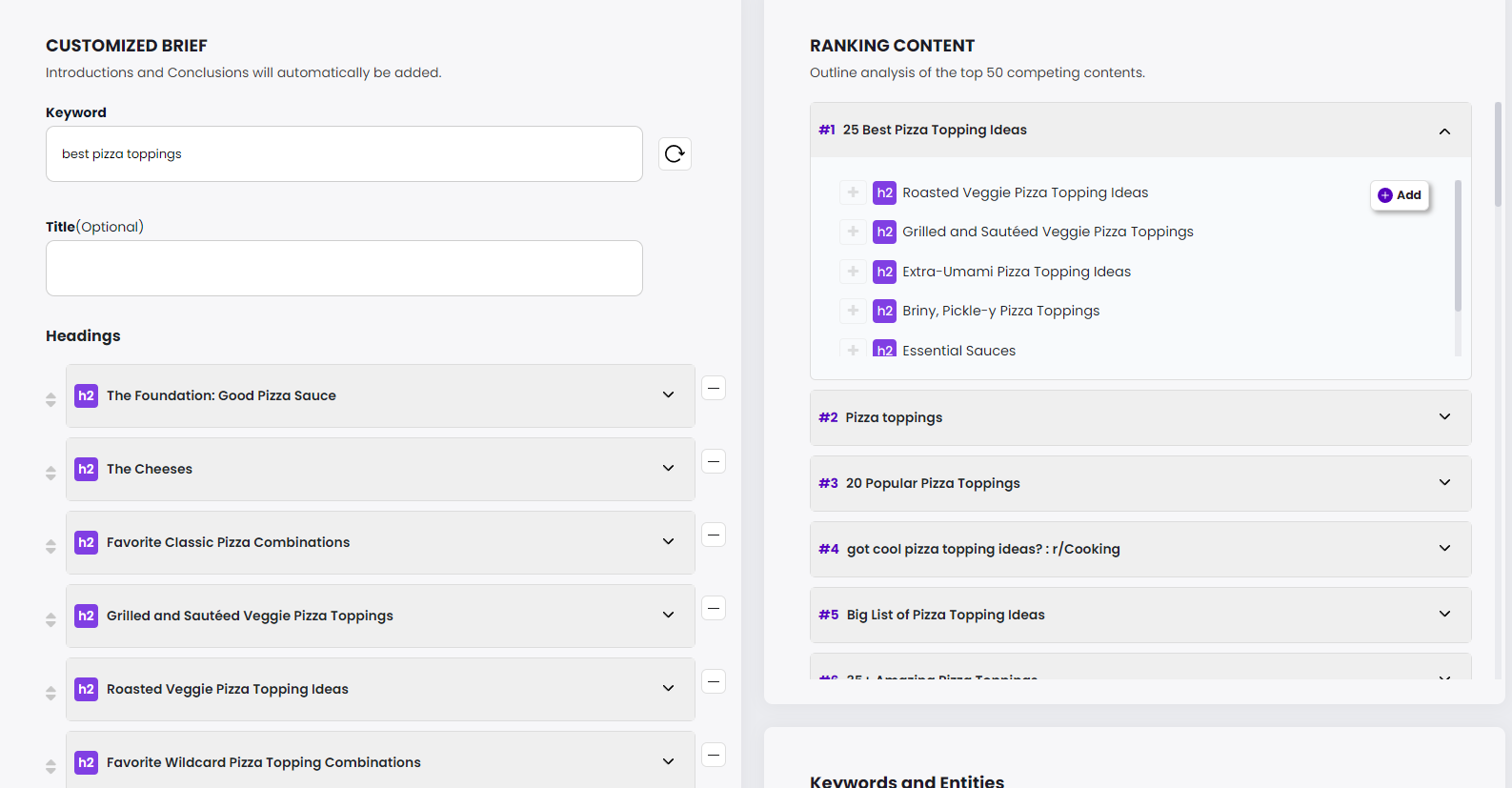
After BrandWell’s RankWell long-form writer generates your article, you can run an optimization audit to update your content based on real-time SERP analysis.
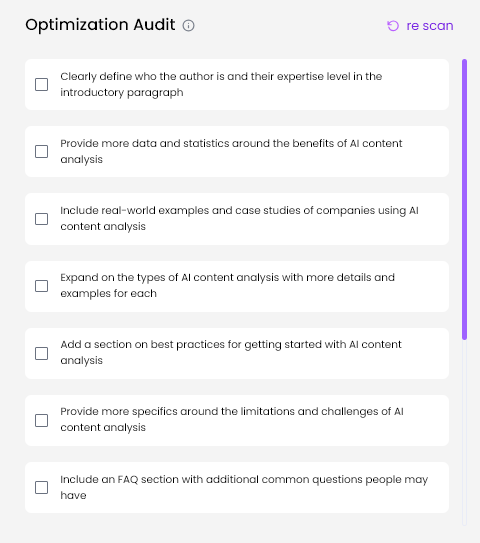
How Often Should You Benchmark Your Website Against Competitors?
Regularly benchmarking your website against competitors is key to identifying areas for improvement and optimizing your online presence. But how often should you conduct these website performance benchmarks?
While there’s no one-size-fits-all answer, a good rule of thumb is to benchmark every three months. This frequency allows you to stay informed about industry shifts, competitor strategies, and emerging trends.
Quarterly benchmarks provide a consistent pulse on your website’s performance relative to the competition, enabling you to make data-driven decisions.
However, several factors might necessitate more frequent benchmarking, such as:
- High-Stakes Industry: If you operate in a highly competitive industry like e-commerce where even minor changes can significantly impact revenue, consider benchmarking monthly or even bi-weekly.
- Website Redesign or Major Updates: After implementing significant changes to your website such as a redesign or a platform migration, more frequent benchmarking helps you measure the impact of those changes and make necessary adjustments.
- Seasonal Campaigns: During peak seasons or marketing campaigns, more frequent benchmarking helps you understand how your website performs under increased traffic and adjust your strategies accordingly. For example, an online retailer might benchmark weekly during the Thanksgiving-Christmas shopping season.
While quarterly benchmarks are a good starting point, the ideal frequency depends on your specific business needs and the dynamic nature of your industry. Regularly evaluating your website’s performance against competitors empowers you to stay agile, optimize your online presence, and maintain a competitive edge.
FAQs: Benchmark Your Website Against Competitors
How Do You Benchmark a Company Against Competitors?
You can start by selecting key metrics like online visibility and social media engagement. Use these metrics to evaluate your website’s performance compared to other businesses.
How to Check Traffic of Competitor Websites?
Several tools like Similarweb allow you to compare web traffic. You can also get information like average visit duration or even bounce rate.
Getting traffic estimates for competing sites offers a point of comparison. Use this comparison as a starting point for improving the performance of your business.
What is Competition Benchmarking?
Competition benchmarking means assessing the strengths and weaknesses of competitors in your industry. This process is designed to enhance your understanding of the competitive landscape so you can find growth opportunities.
Competition benchmarking requires researching the strategies that your rivals use to reach customers. Essentially, it means taking a deep dive into competitor data to analyze what’s working and what’s not working.
What are the Benchmarks for Evaluating a Website?
Choosing the right benchmarks is essential when conducting website analysis. Important factors when deciding what benchmarks to use include:
- Marketing Channels
- Customer Satisfaction
- Search Engine Optimization (SEO) Strategy
- Content Quality
- Website Speed
- How User-Friendly Your Website Is Overall
Conclusion
Benchmarking your website against competitors isn’t a one-time activity. It’s an ongoing process of observation, analysis, adaptation, and then repeating it all over again.
By consistently refining your strategies, you’ll not only keep up but potentially surge ahead of the competition.
If your competitive analysis reveals that your website is lagging in terms of content, one way to catch up and even outperform your rivals is to automate your content marketing process. Subscribe to BrandWell to consistently publish research-backed, well-written long-form blog articles that are sure to rank well in search engines.

UNLOCK YOUR POTENTIAL
Long Headline that highlights Value Proposition of Lead Magnet
Grab a front row seat to our video masterclasses, interviews, case studies, tutorials, and guides.

